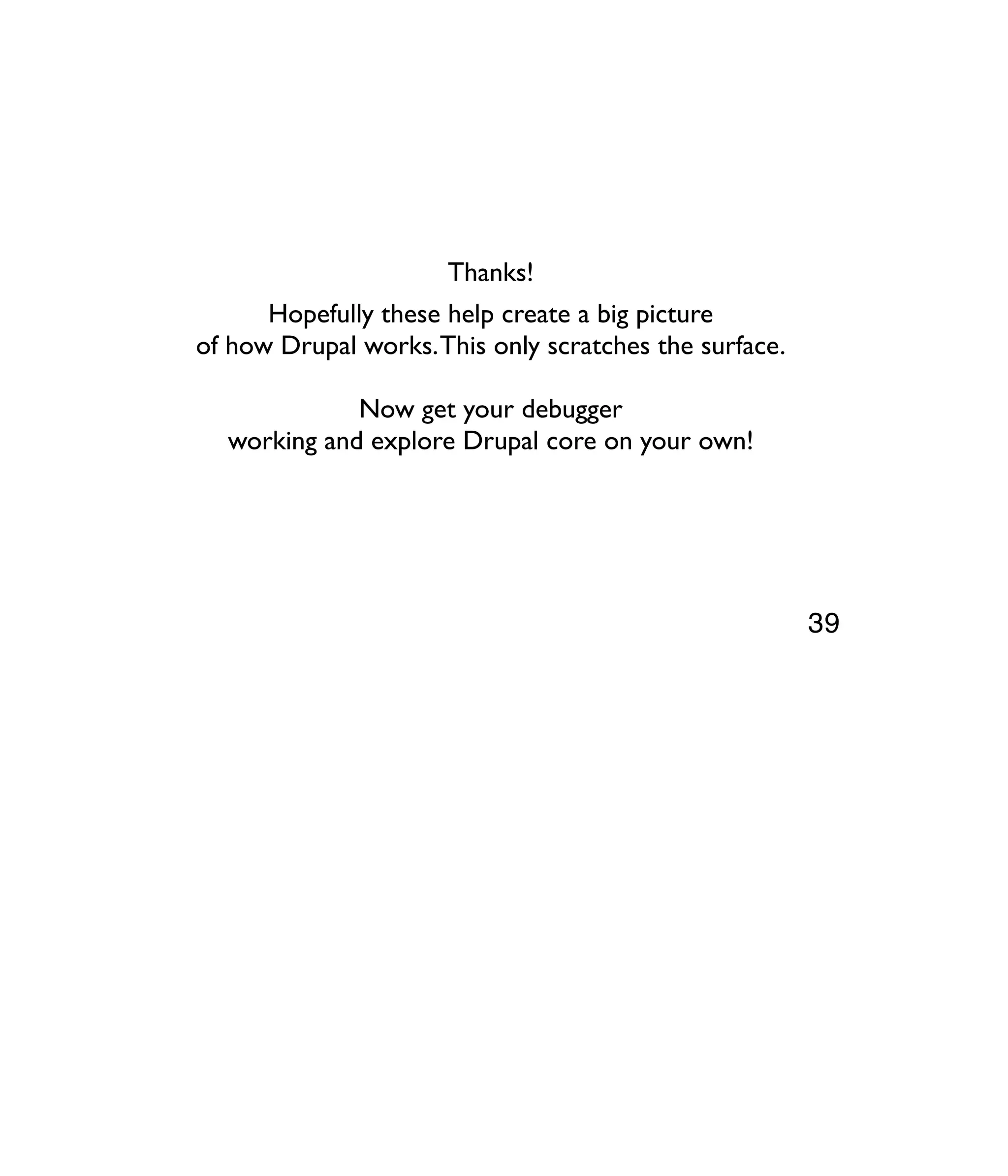This document provides an overview of Drupal architecture, including: - The typical technology stack of OS, web server, PHP, database, and Drupal software. - How requests are routed through Drupal's bootstrap process and menu system before being returned as HTML. - Common patterns in Drupal like hooks, structured data arrays, and modules altering output. - Key concepts like entities, bundles, and fields that make up content types. - Questions to consider when planning a Drupal site like available functionality and theming.
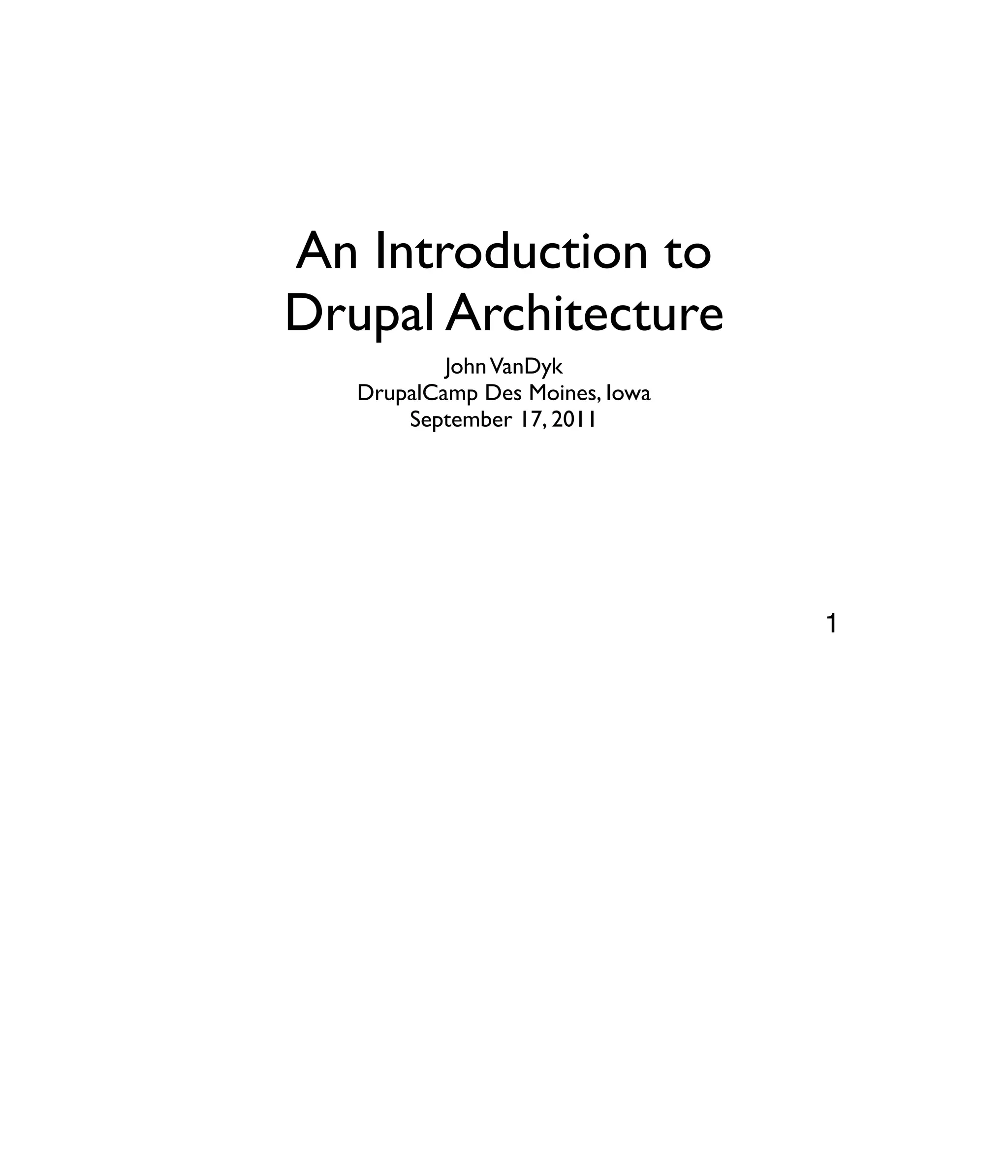

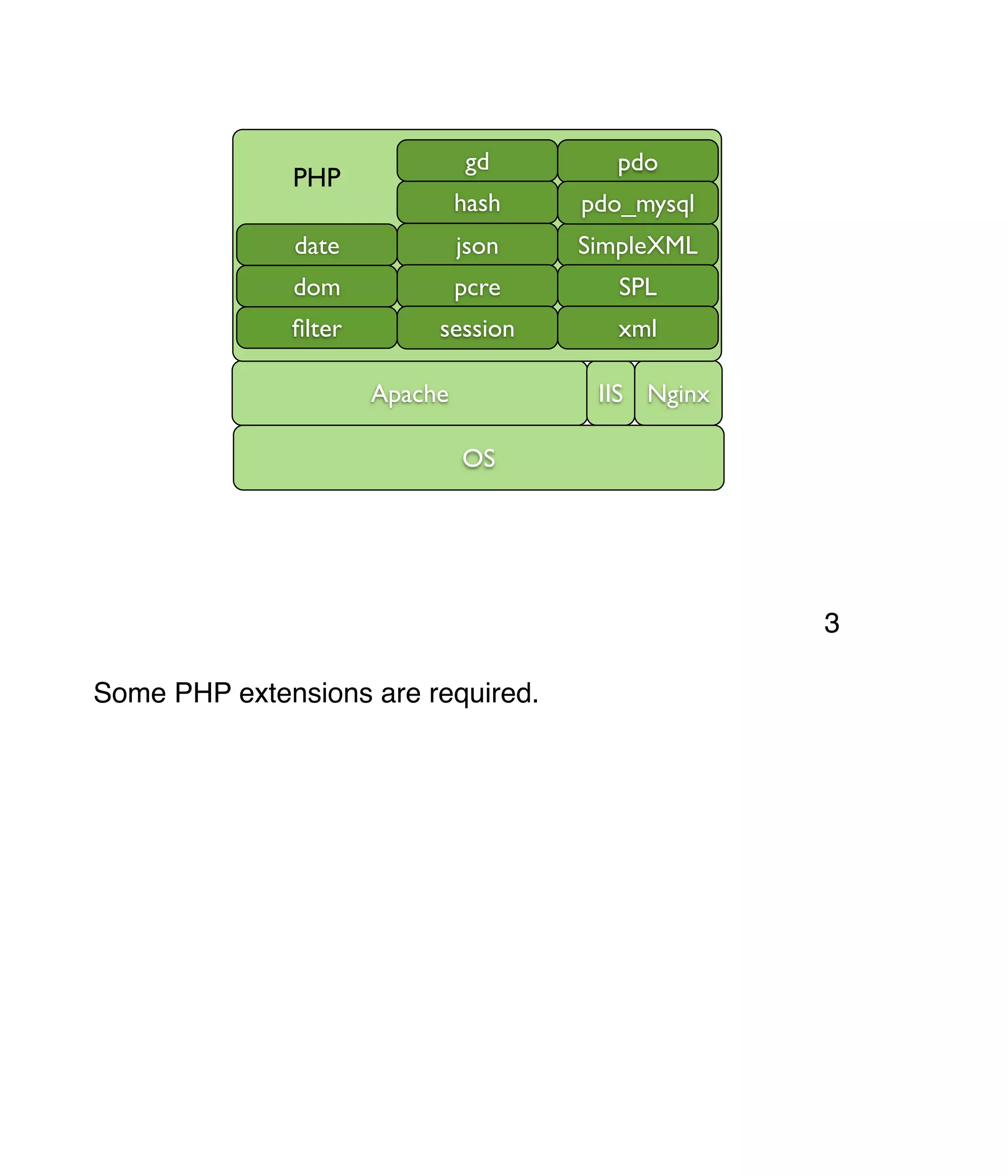
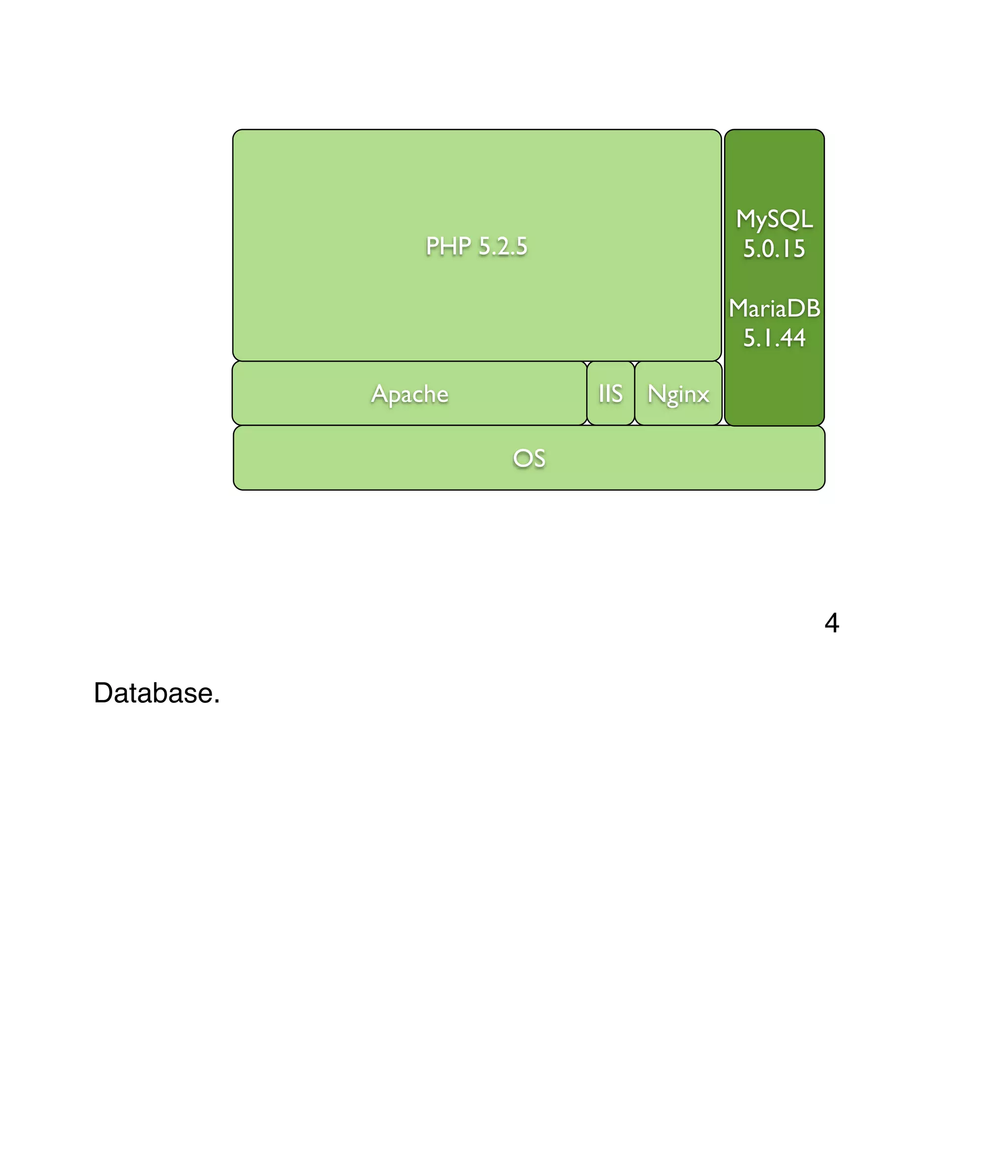
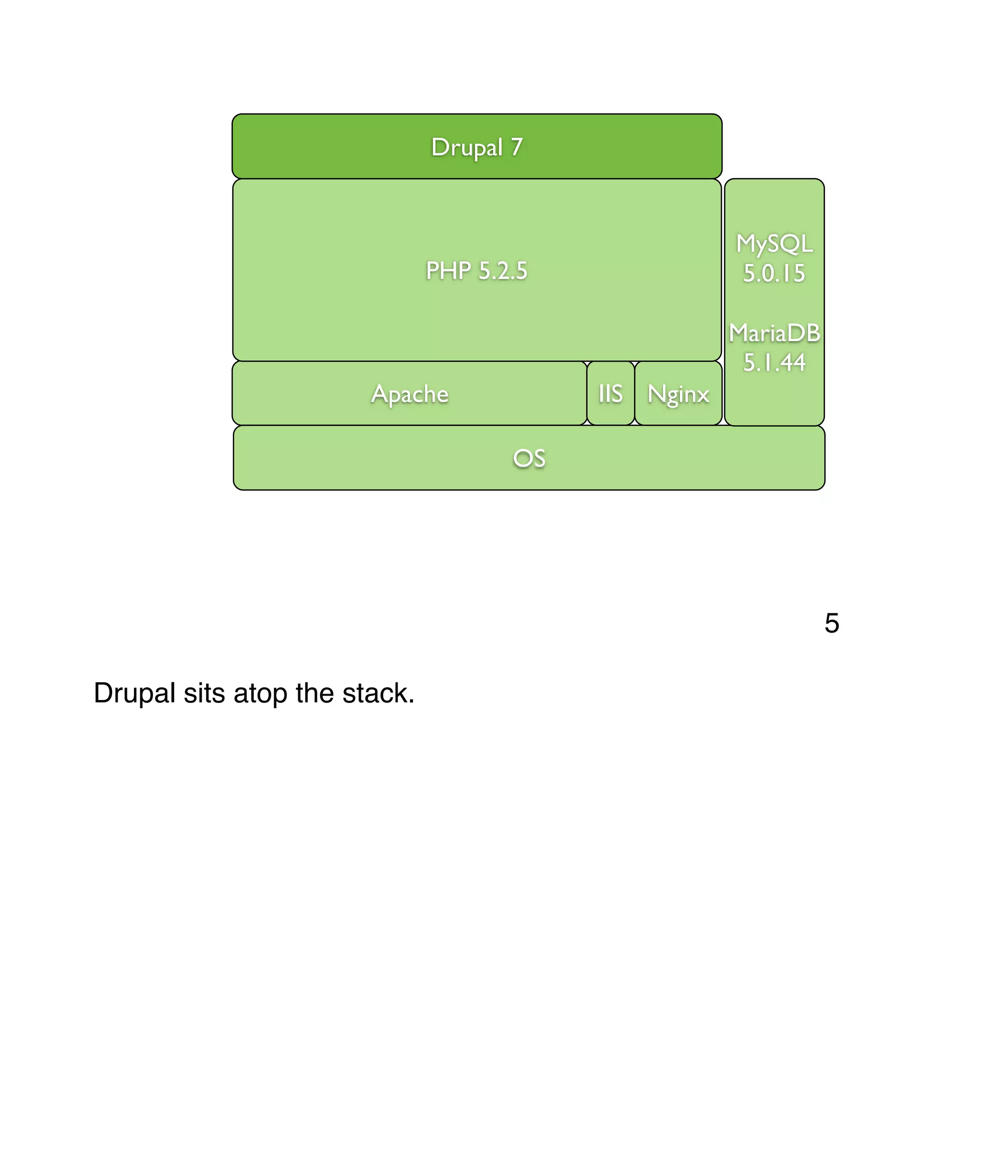
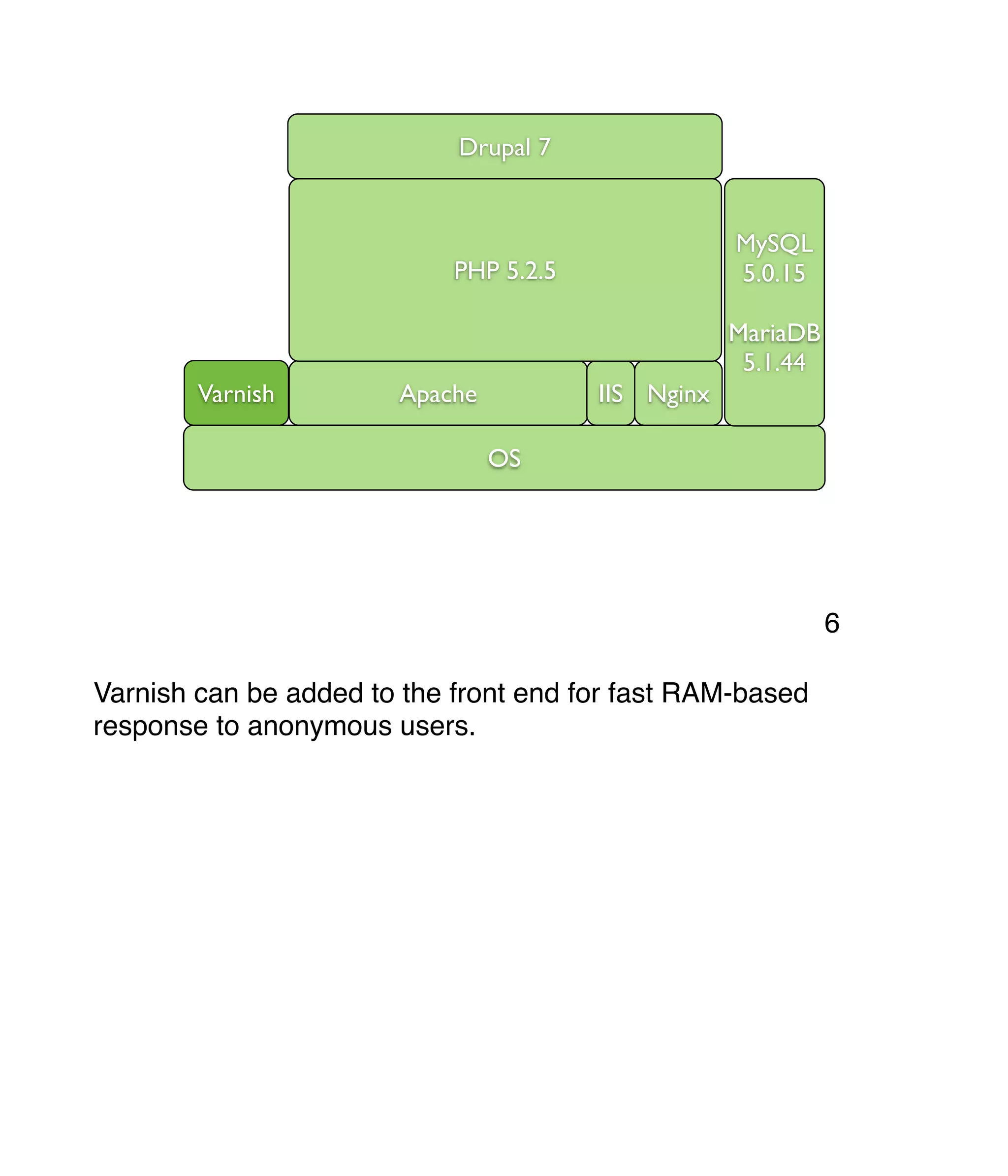
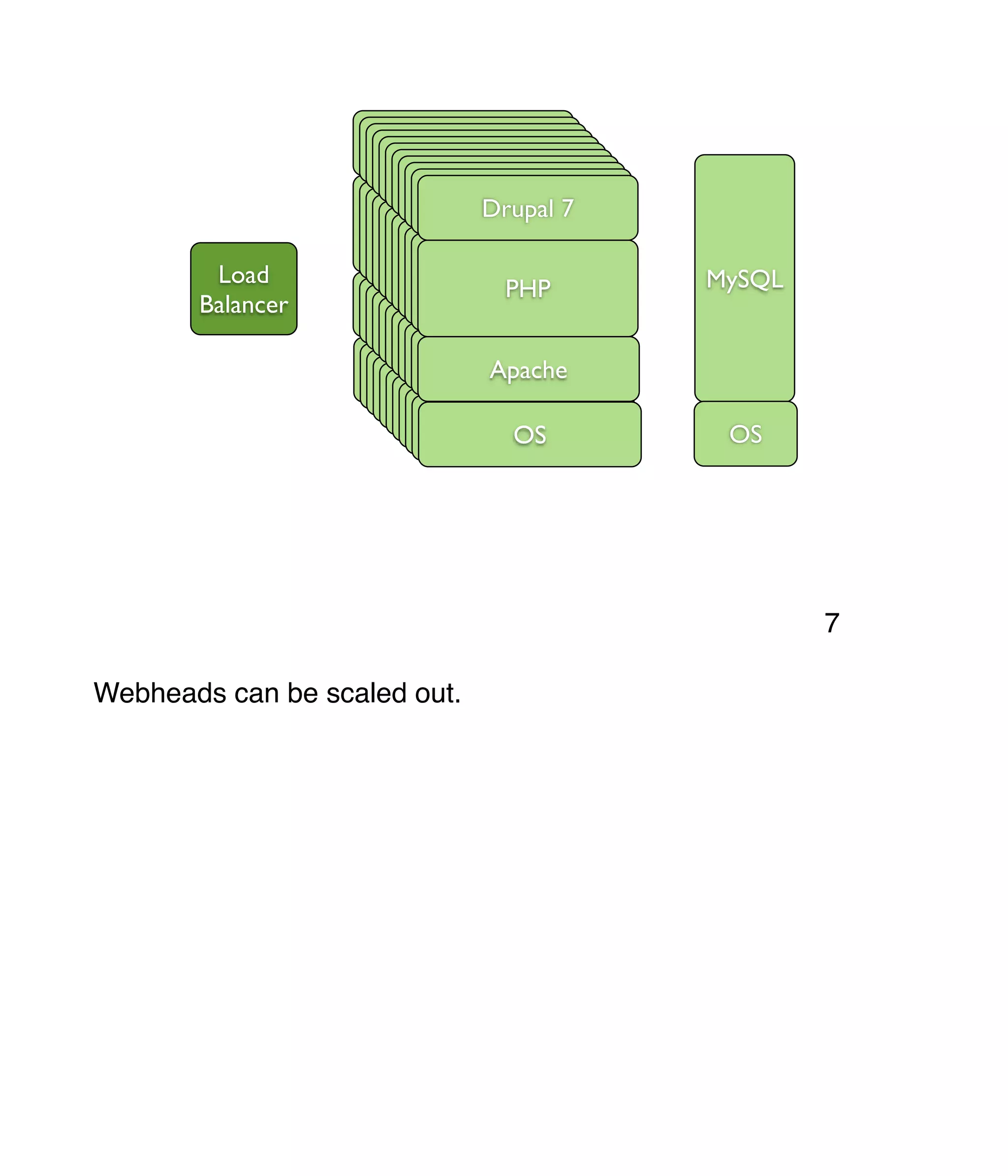
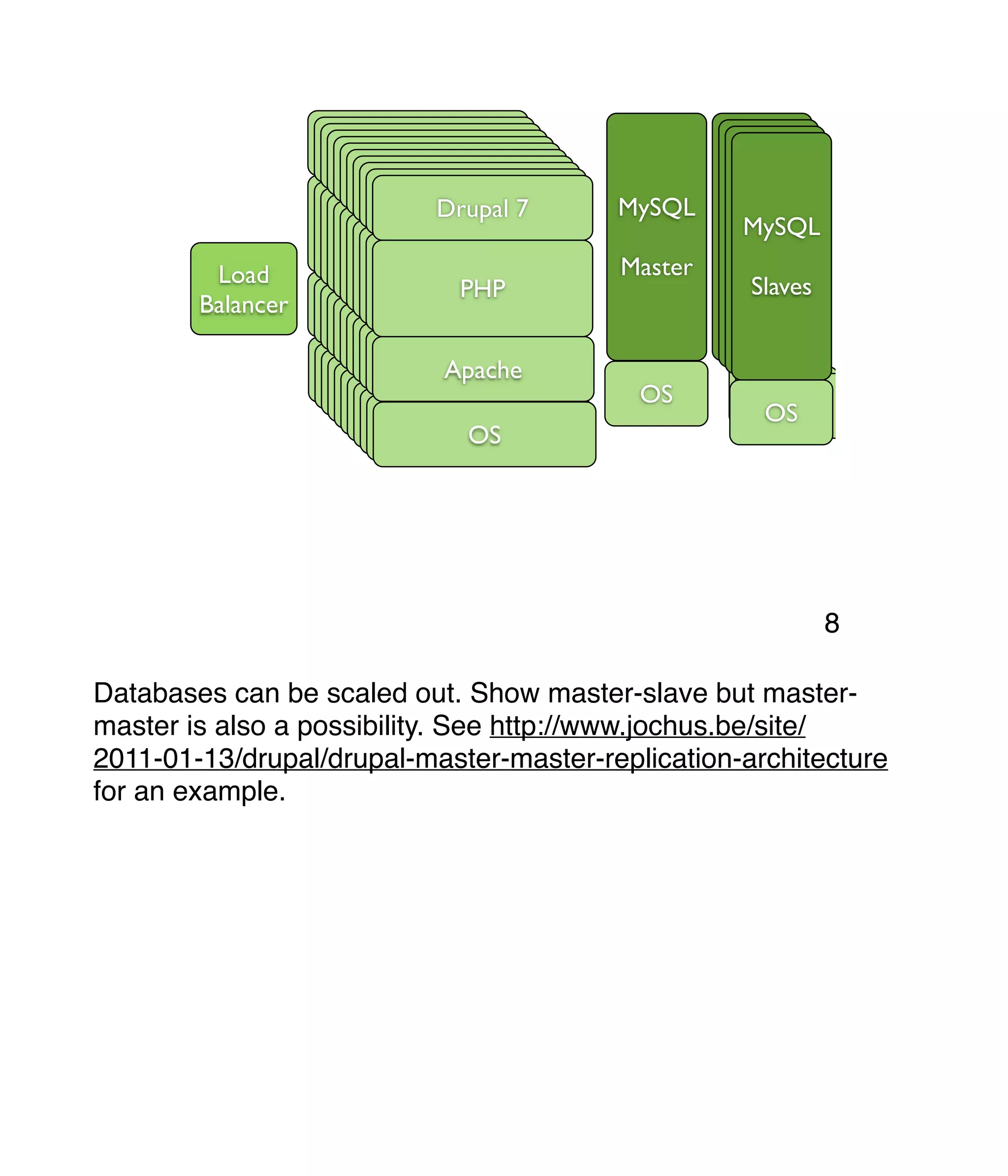


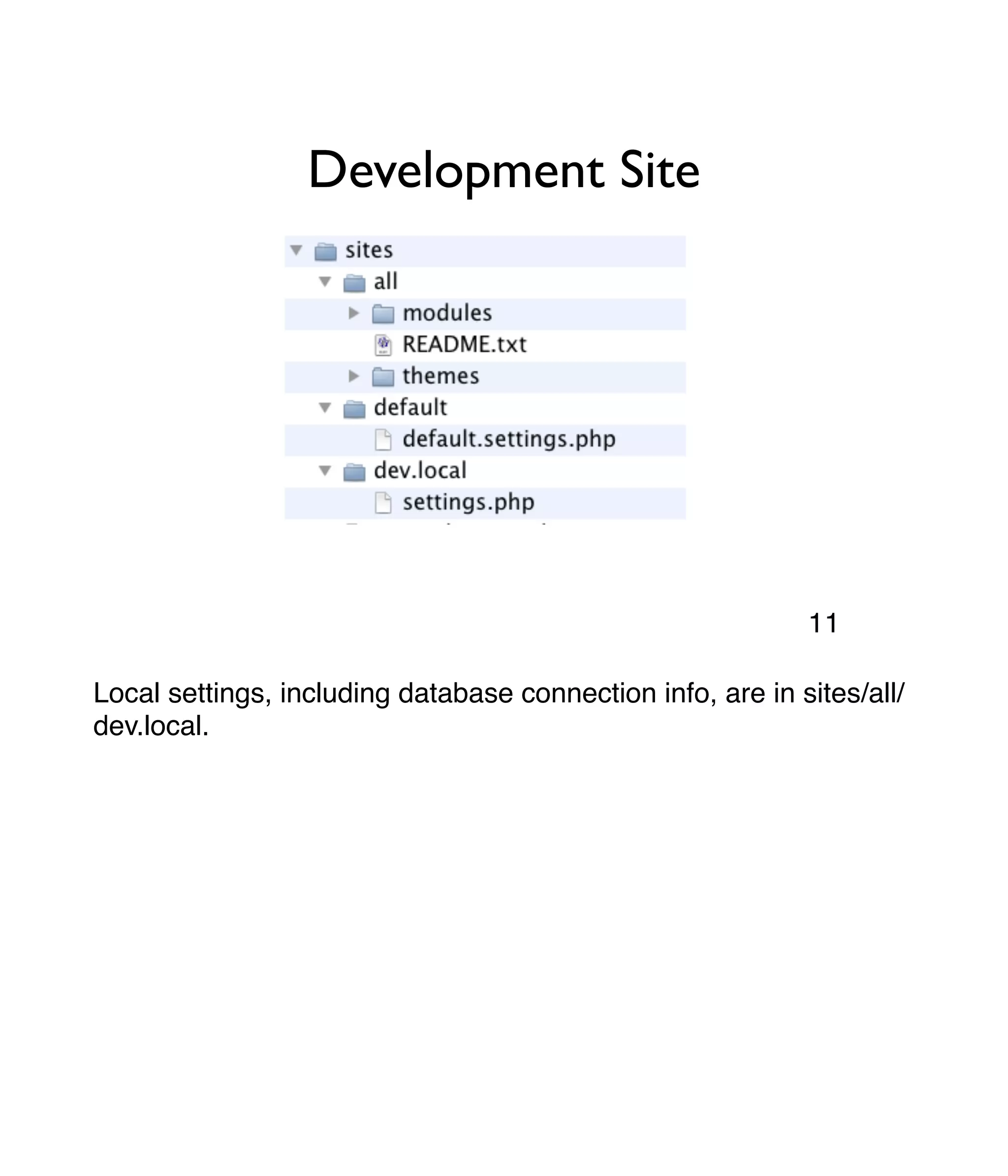
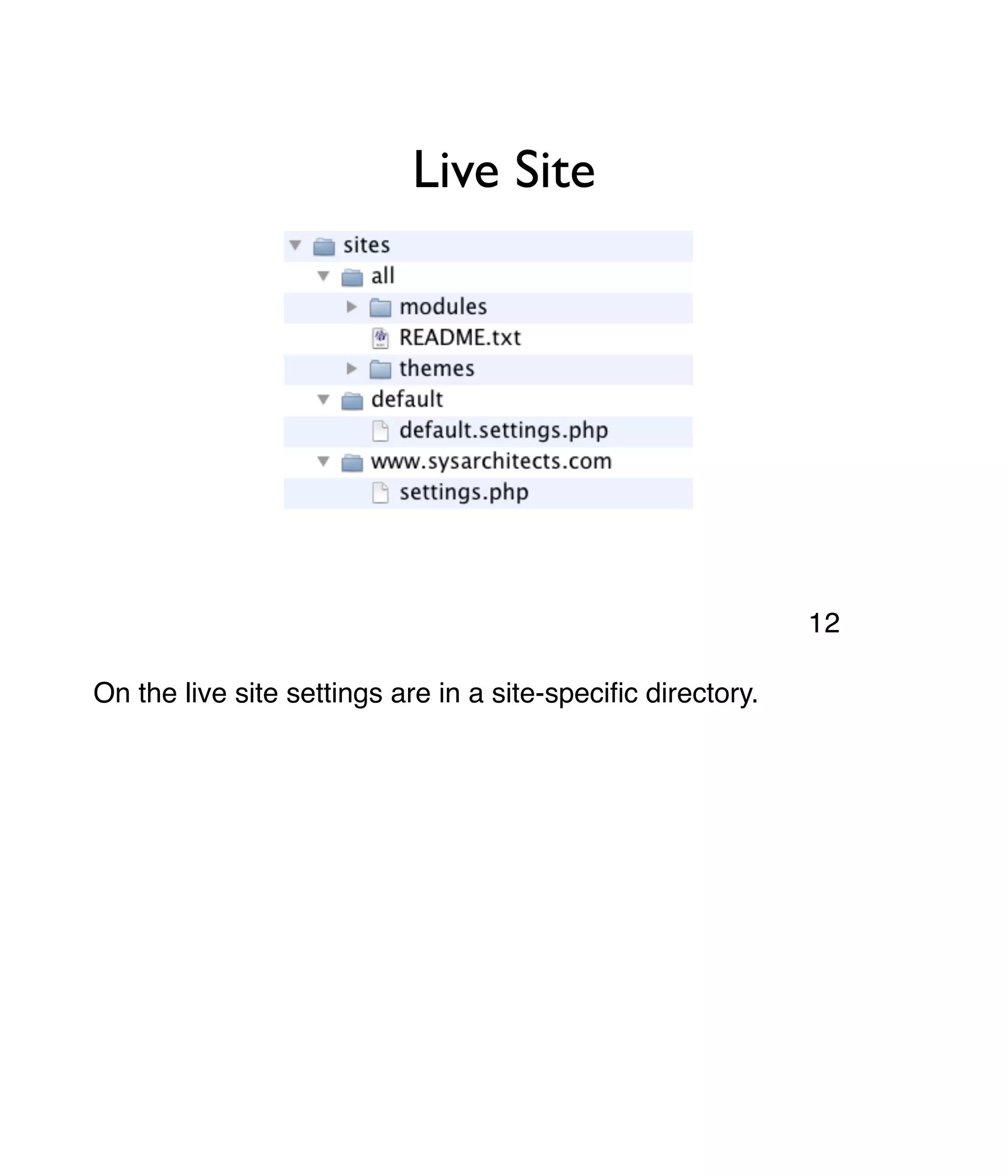
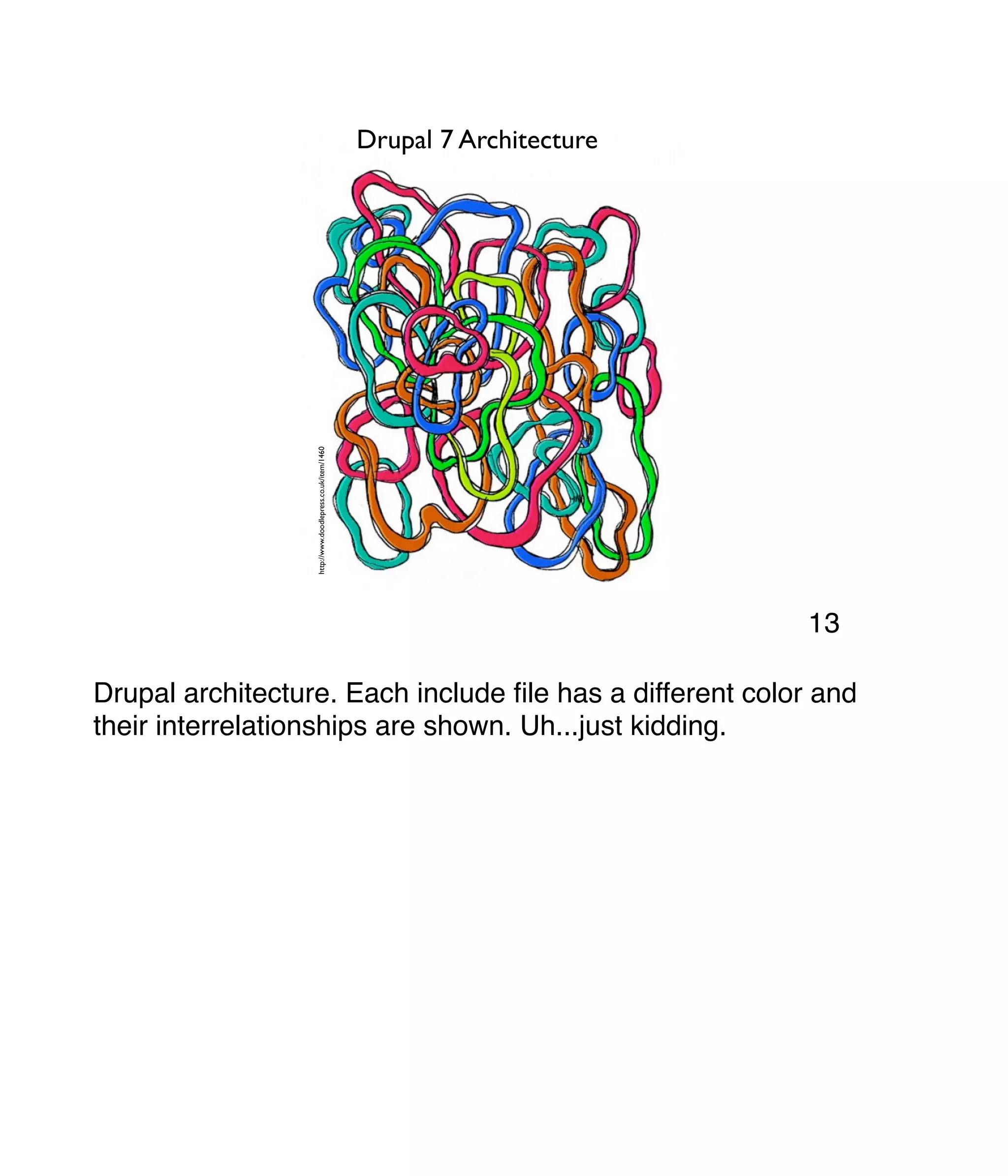
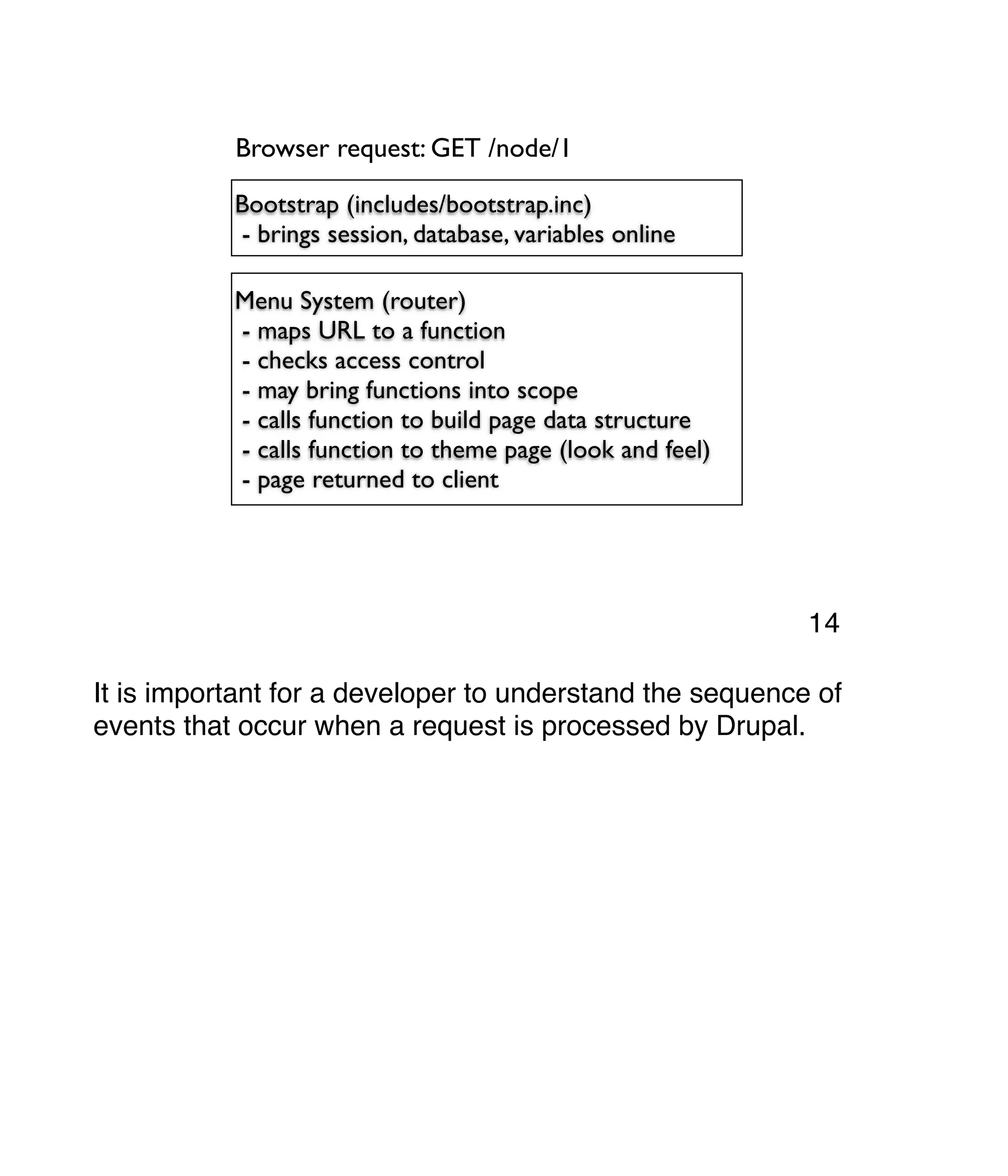
![/index.php?q=node/1 /node/1 mod_rewrite in .htaccess $_GET['q'] will contain 'node/1' A typical request starts with mod_rewrite. 15](https://image.slidesharecdn.com/introtodrupal7architecture-150719161606-lva1-app6891/75/Intro-to-drupal_7_architecture-15-2048.jpg)
![index.php menu system Which function should this path be mapped to? $items['node/%node'] = array( 'page callback' => 'node_page_view', 'page arguments' => array(1), 'access callback' => 'node_access', 'access arguments' => array('view', 1), ); index.php invokes the menu system, which handles much more than menus. The menu item that maps to node/1 can be found in node.module. 16](https://image.slidesharecdn.com/introtodrupal7architecture-150719161606-lva1-app6891/75/Intro-to-drupal_7_architecture-16-2048.jpg)
![index.php menu system Does this user have permission to access this path? $items['node/%node'] = array( 'page callback' => 'node_page_view', 'page arguments' => array(1), 'access callback' => 'node_access', 'access arguments' => array('view', 1), ); node.module tells the menu system to invoke a function (node_access()) to determine whether the current user has permission. 17](https://image.slidesharecdn.com/introtodrupal7architecture-150719161606-lva1-app6891/75/Intro-to-drupal_7_architecture-17-2048.jpg)
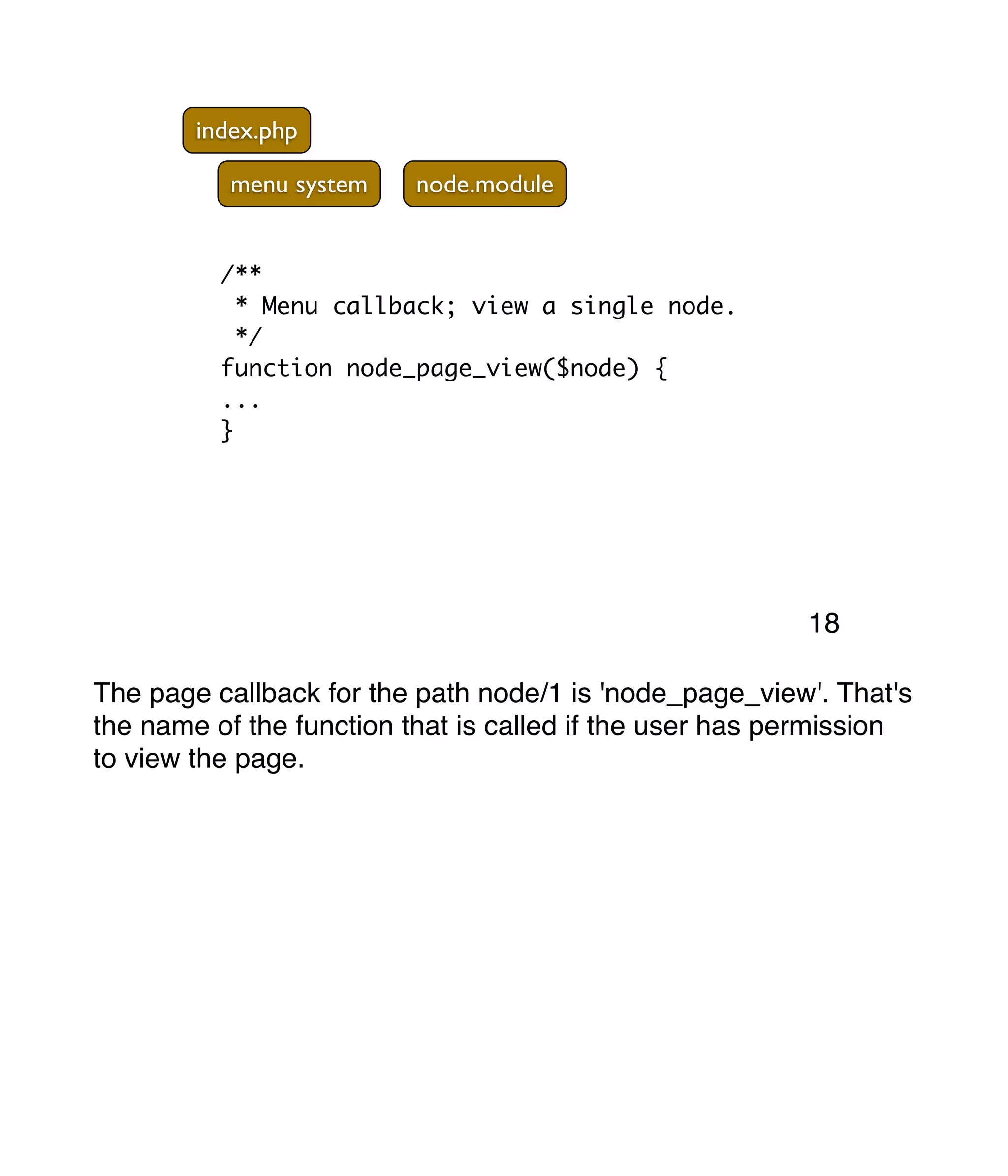
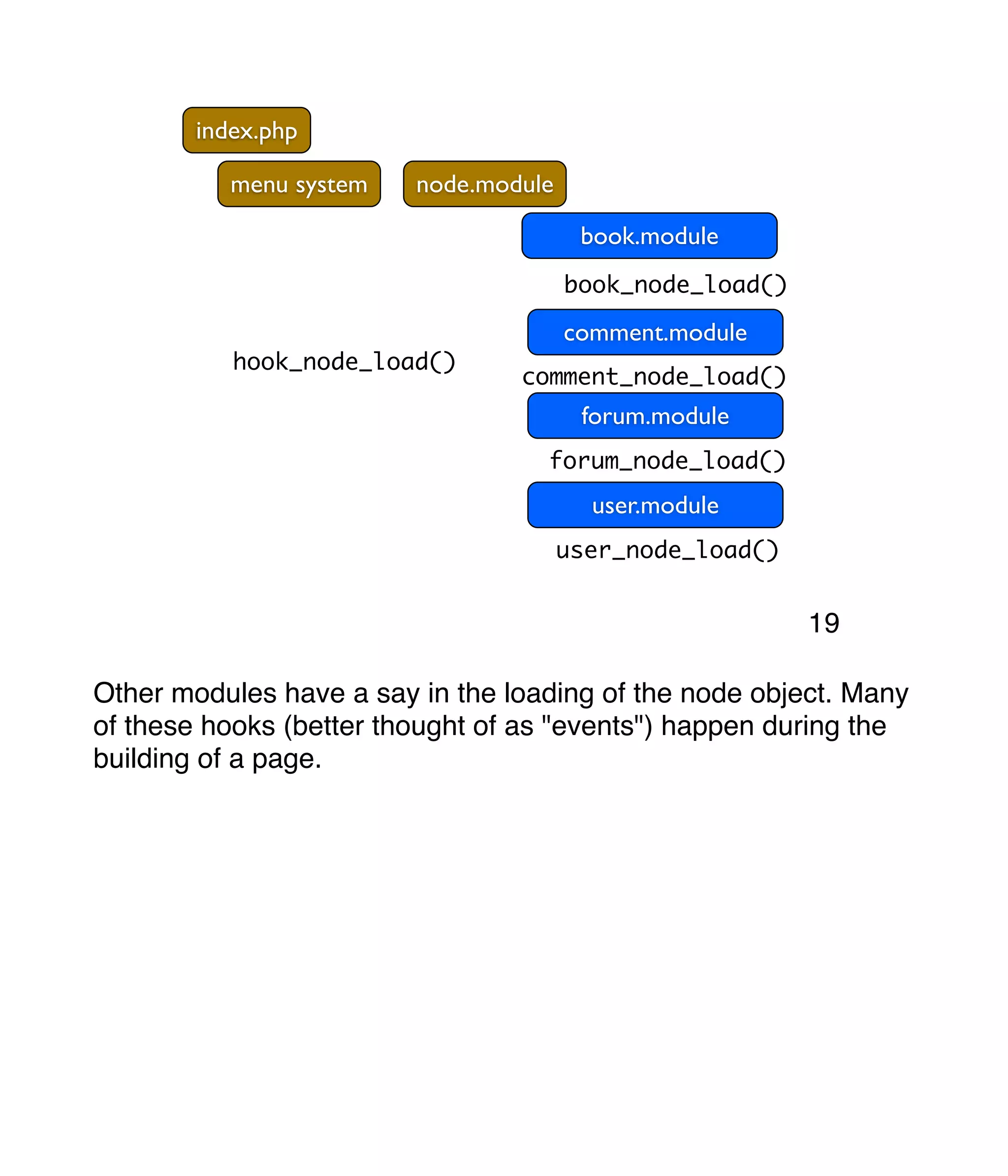
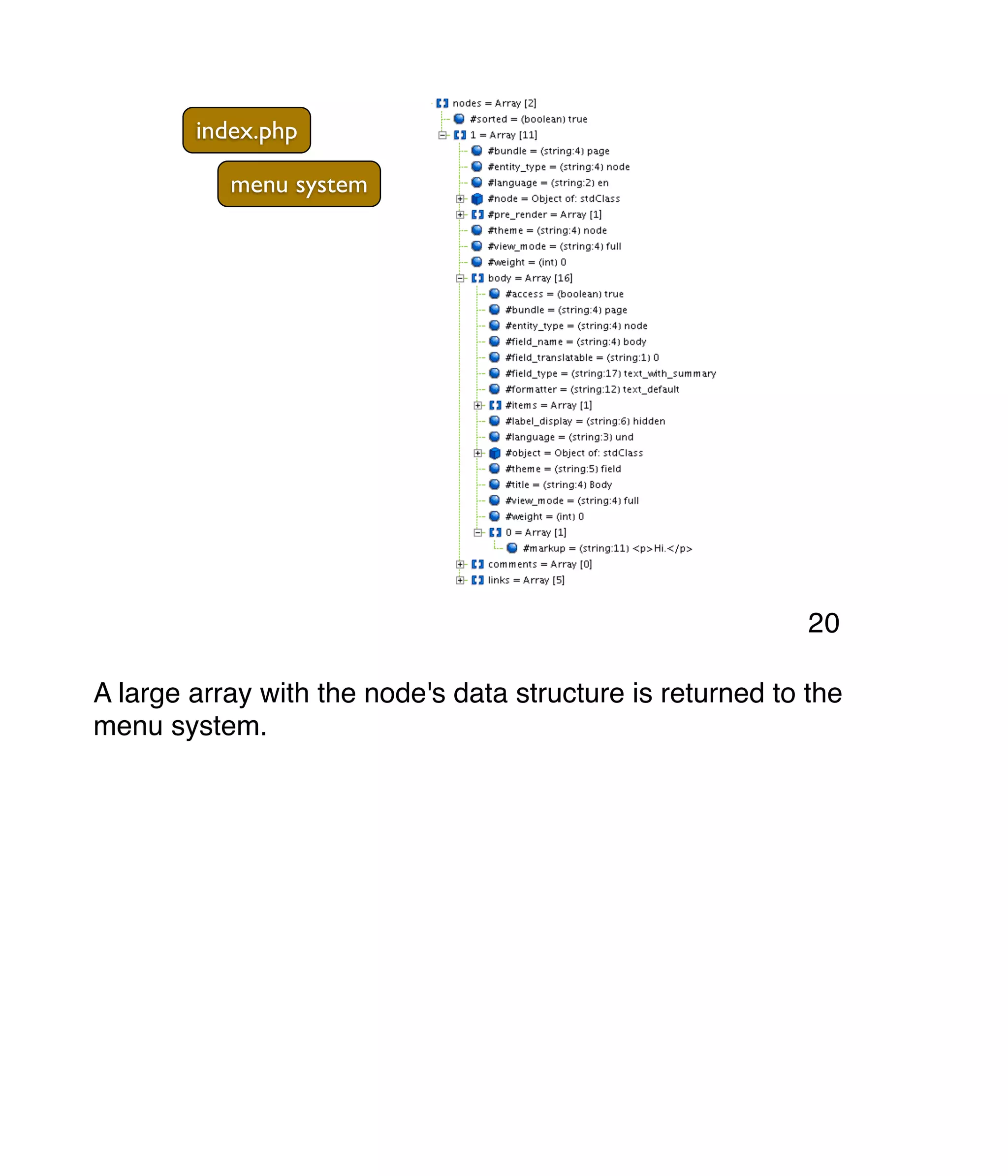
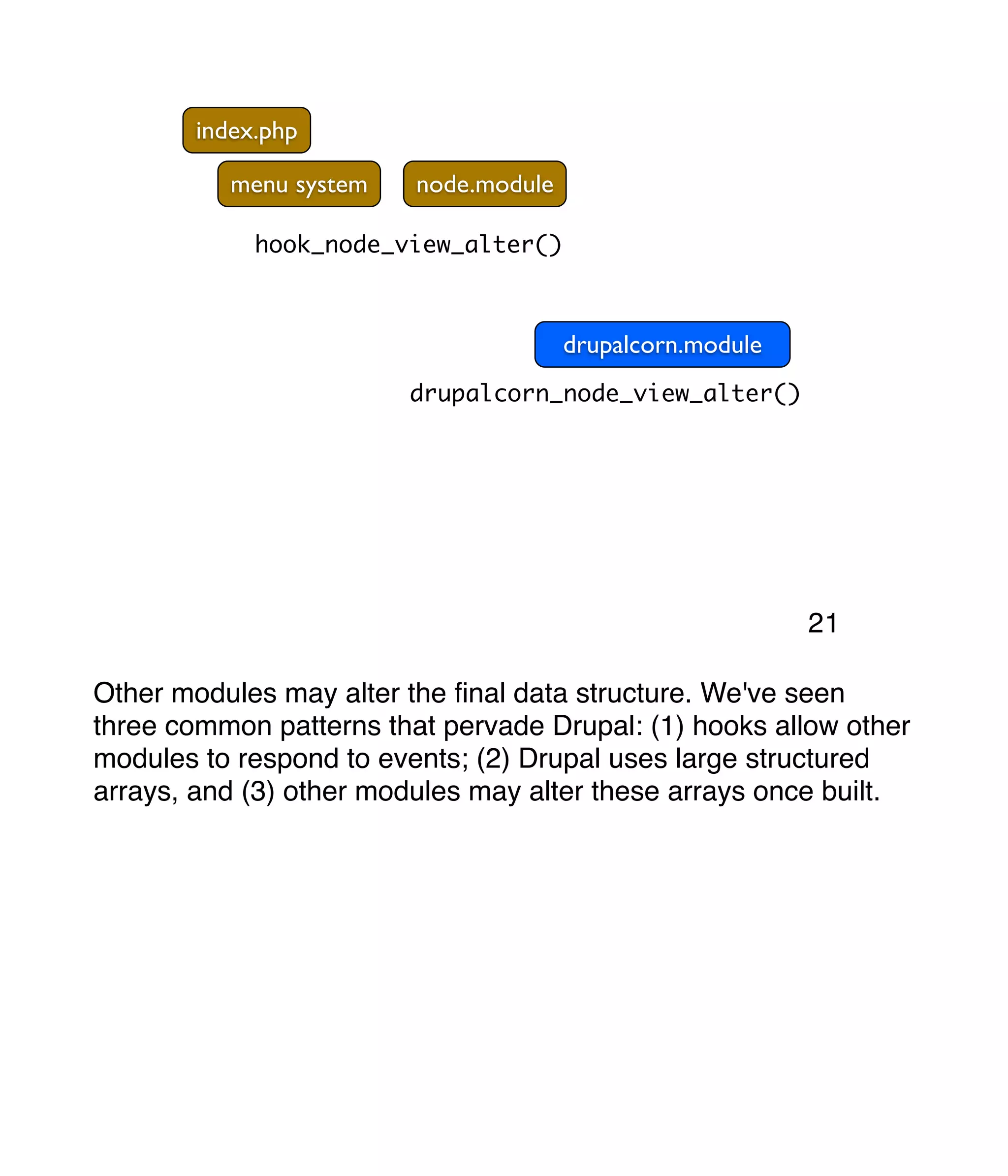


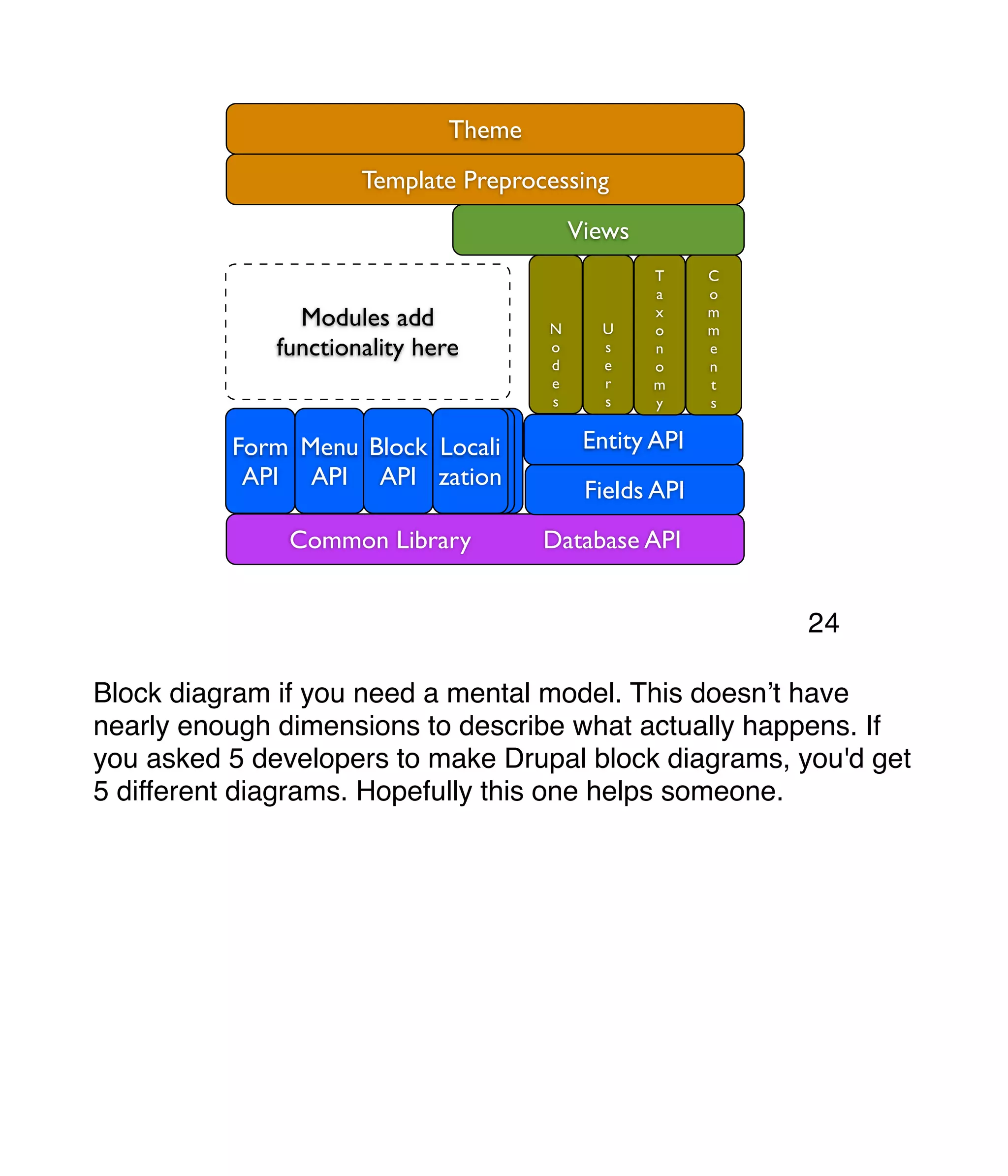
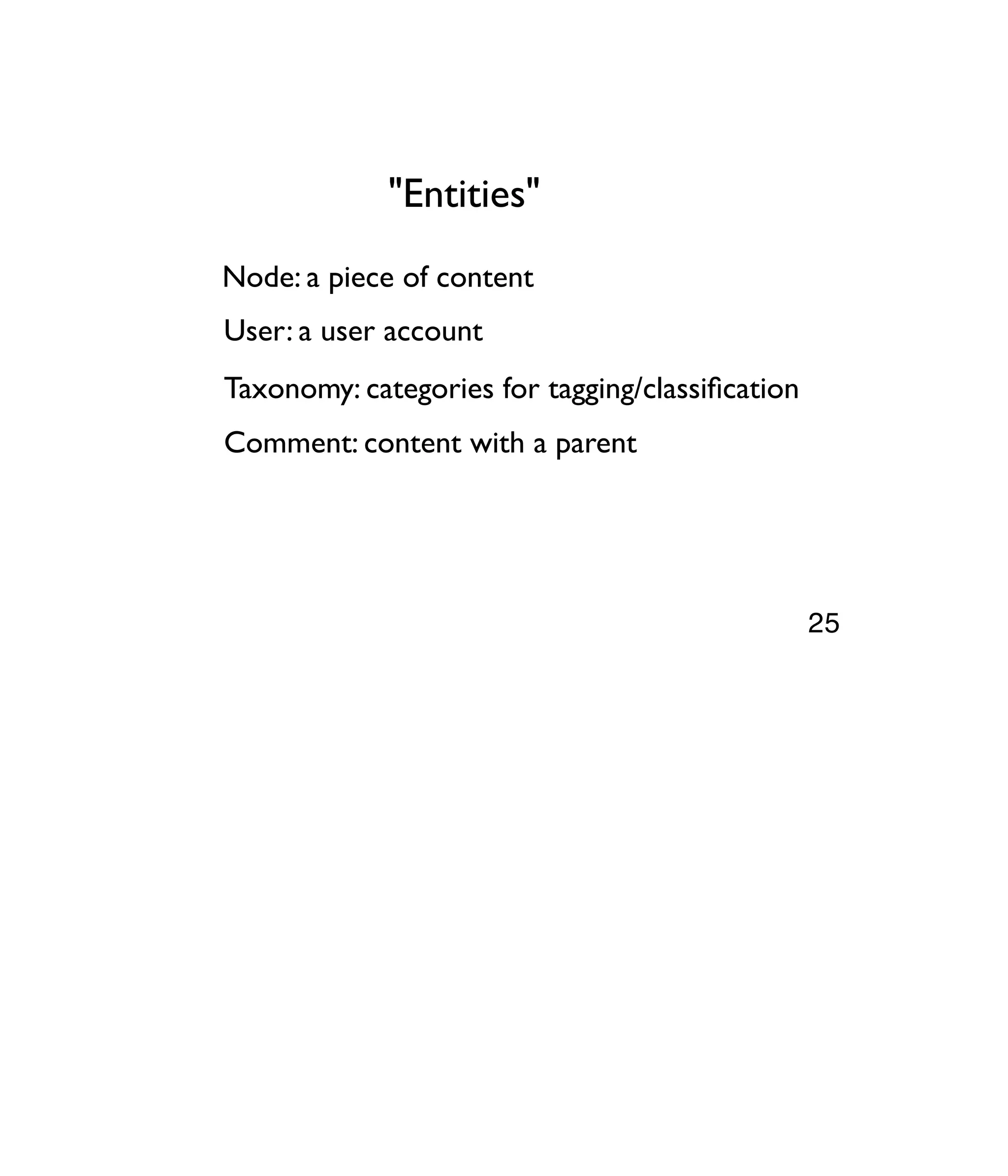
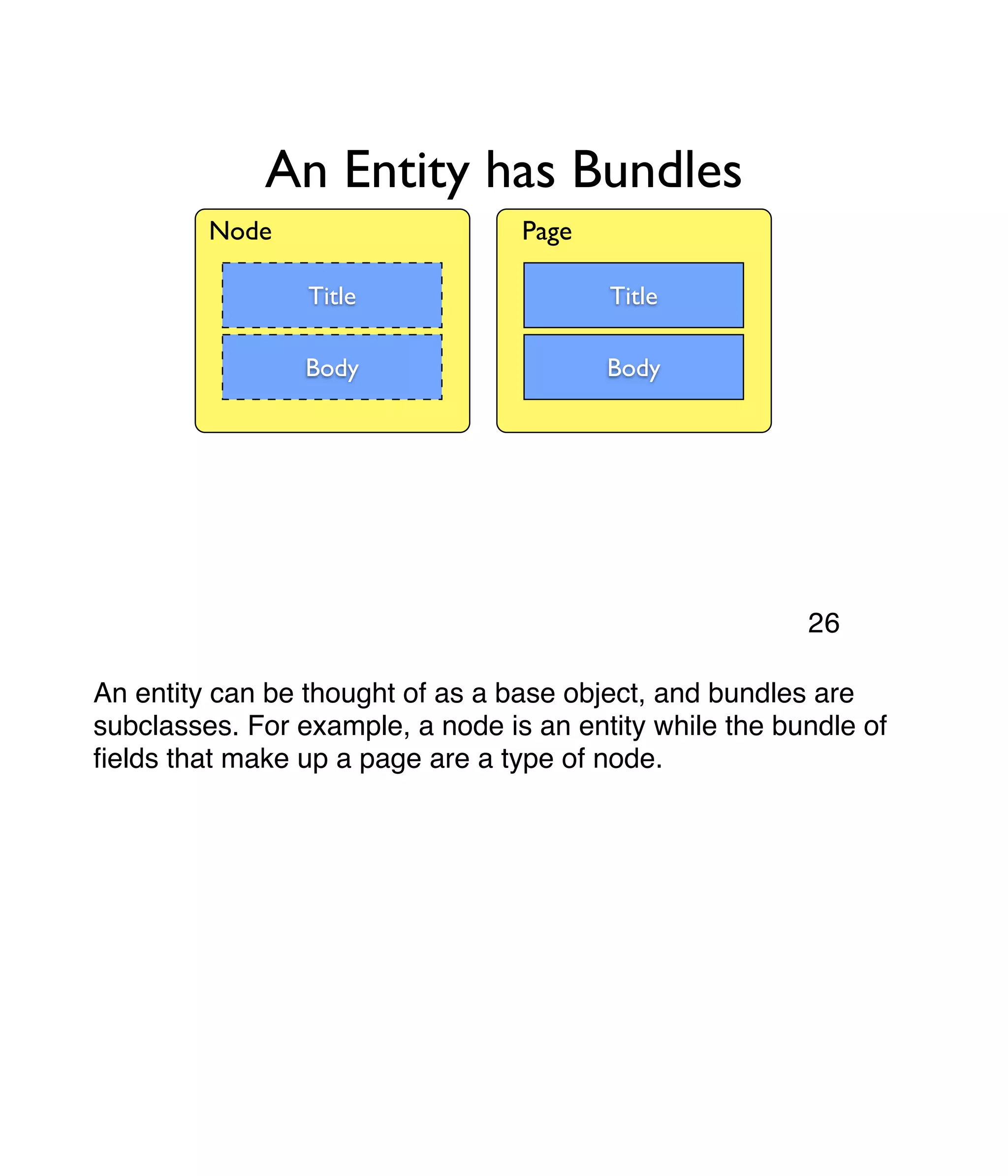


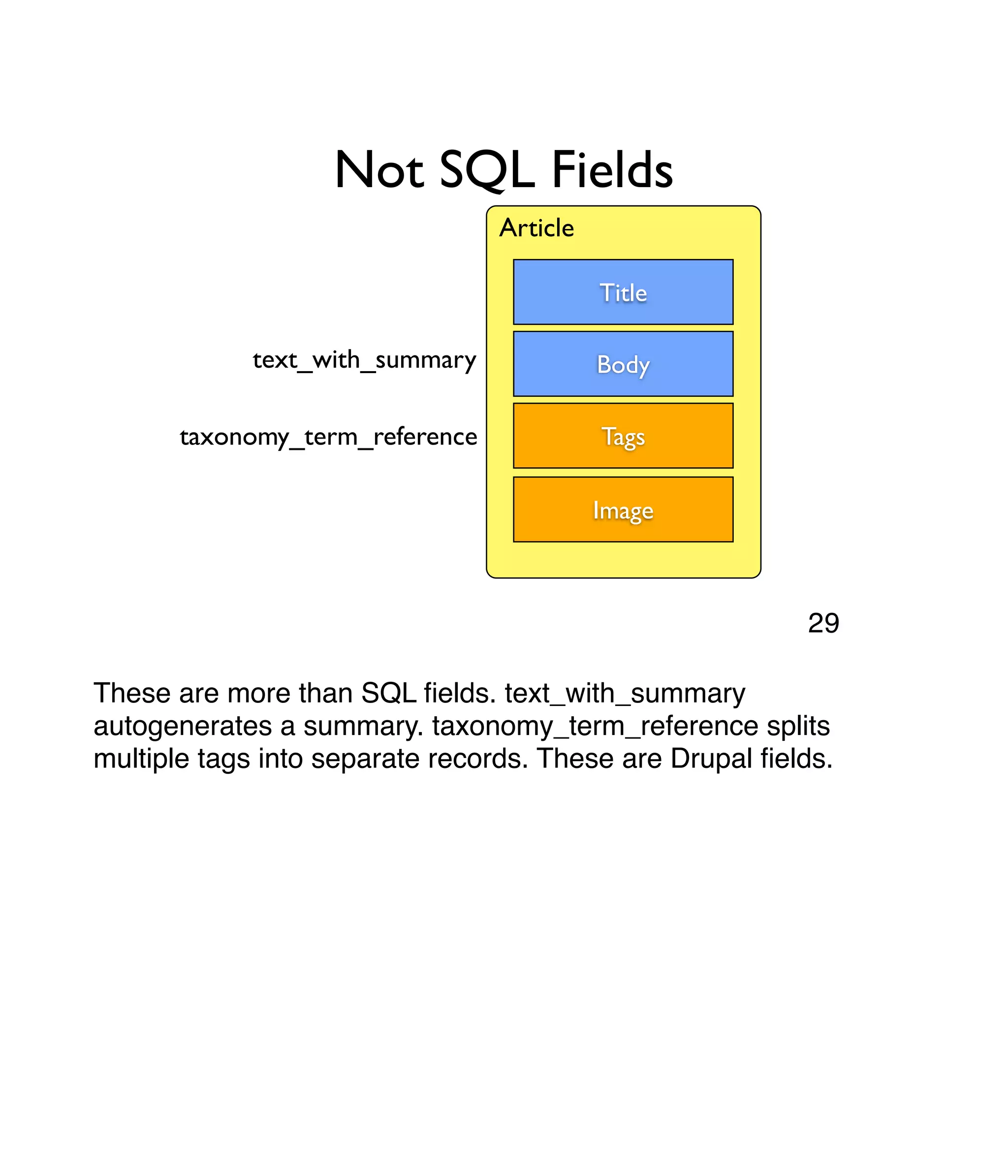
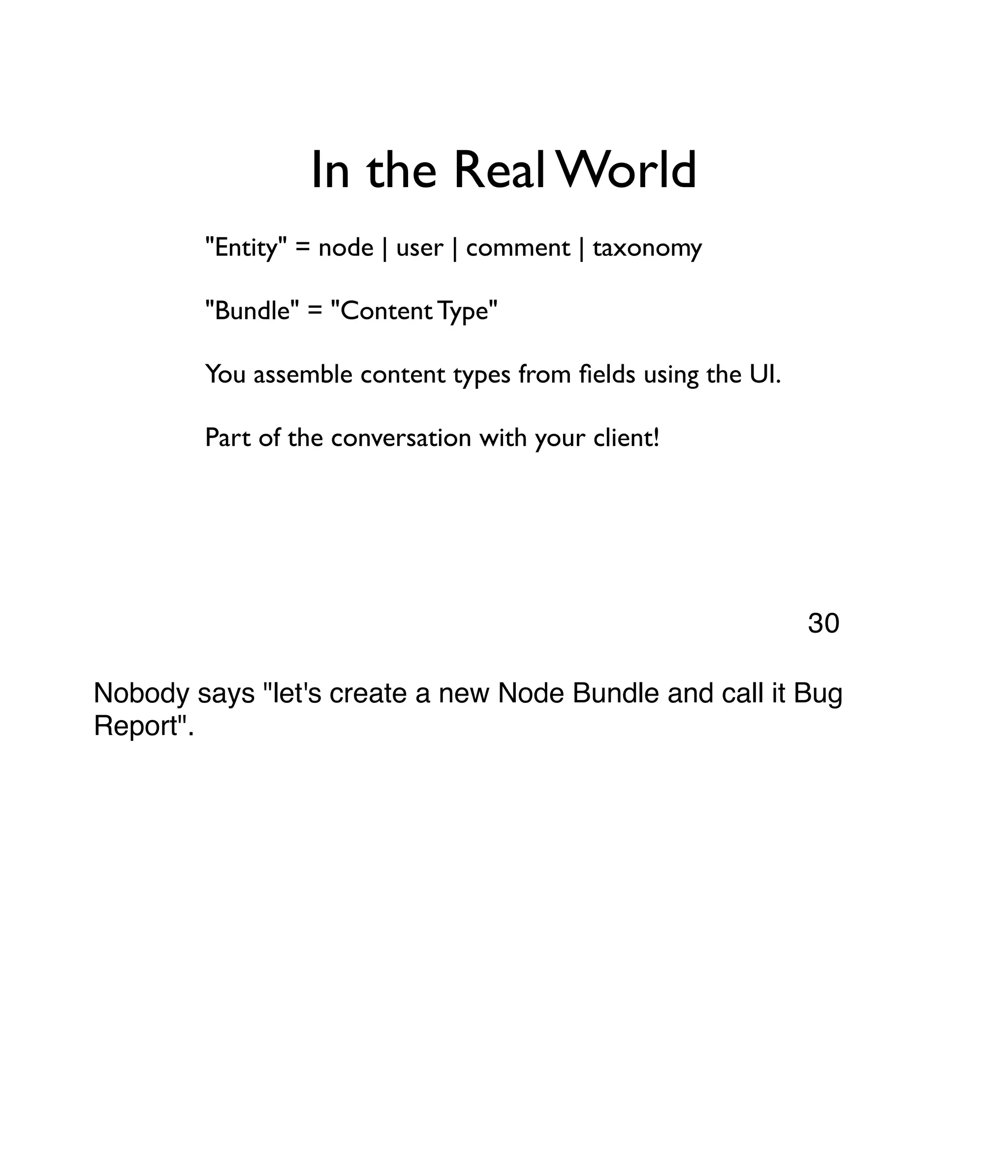
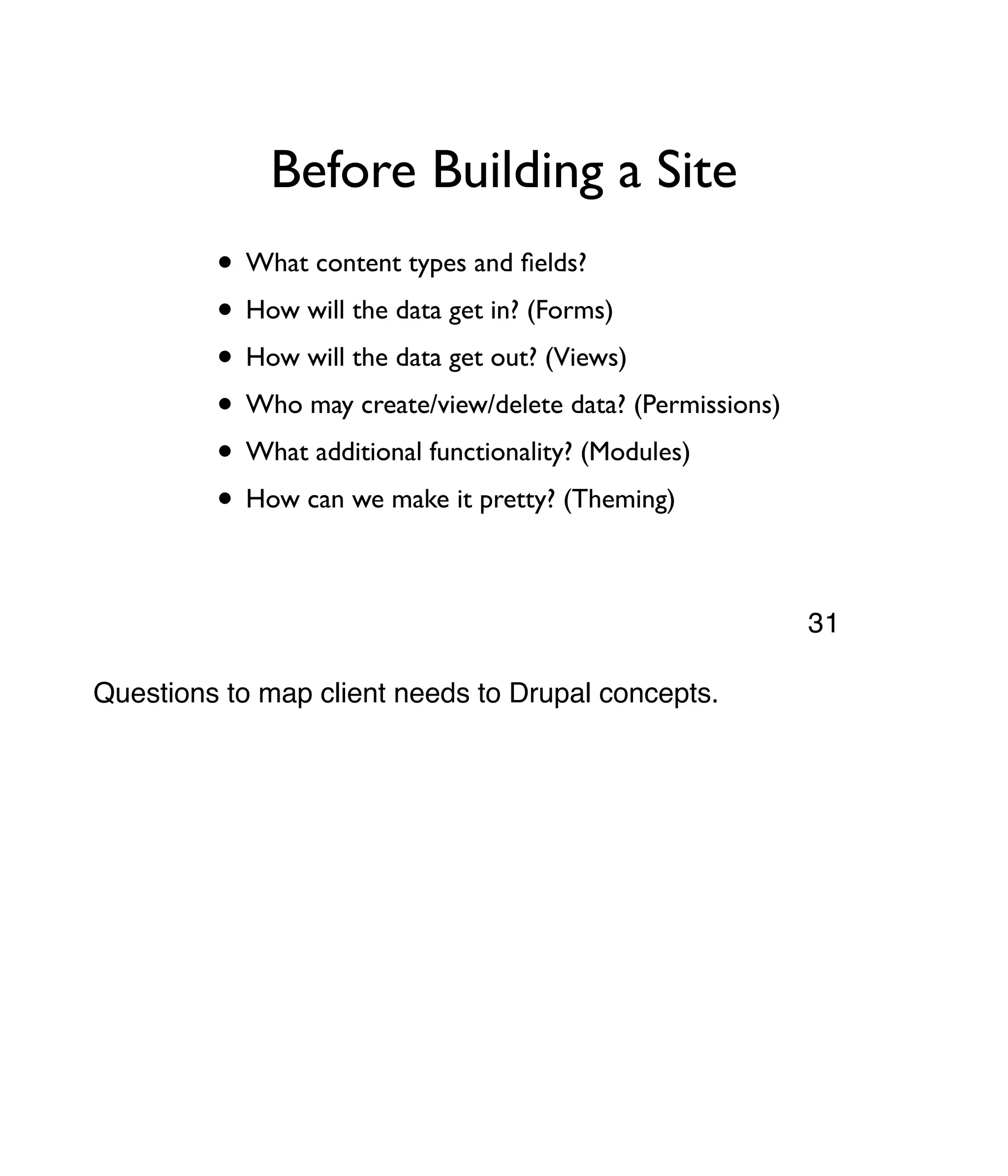
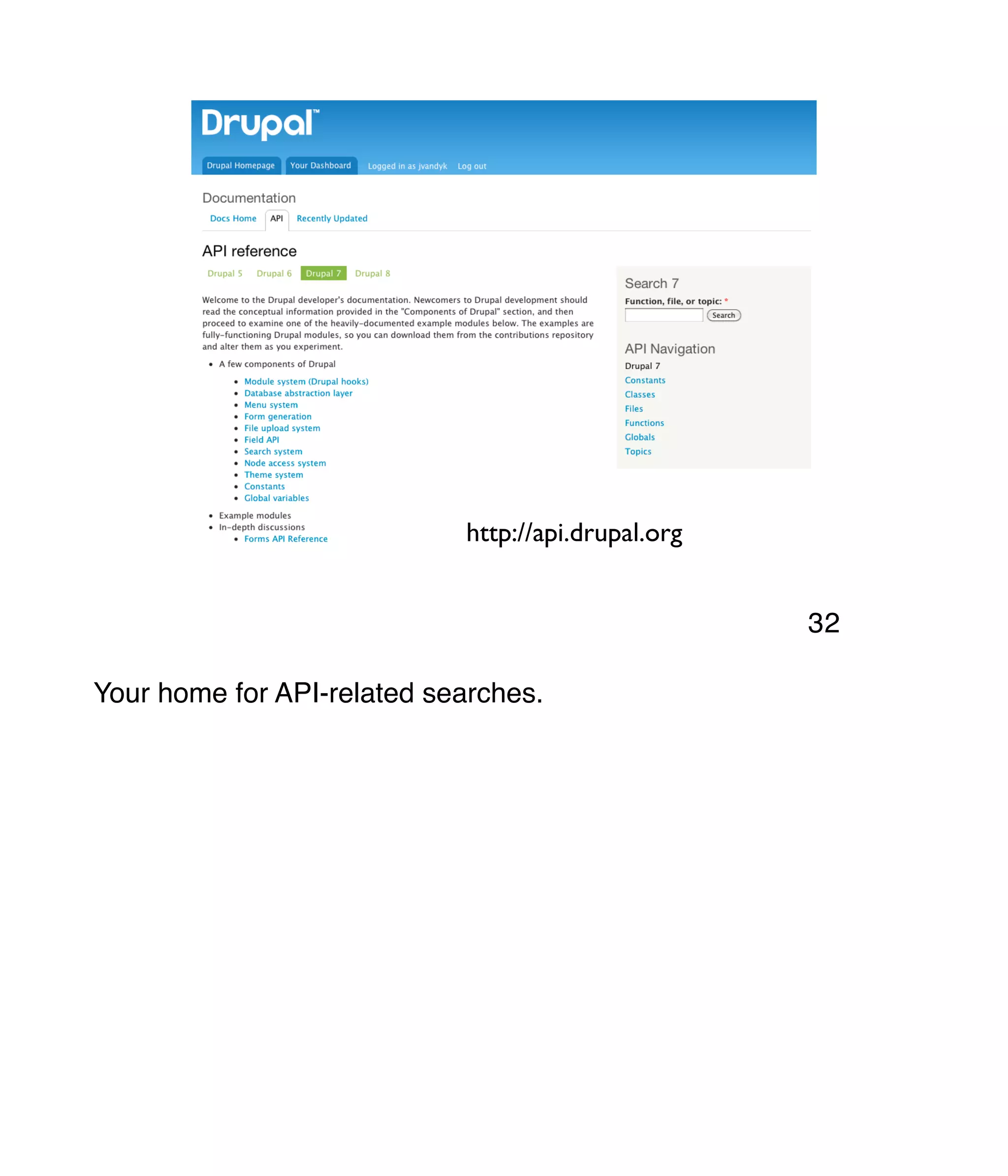
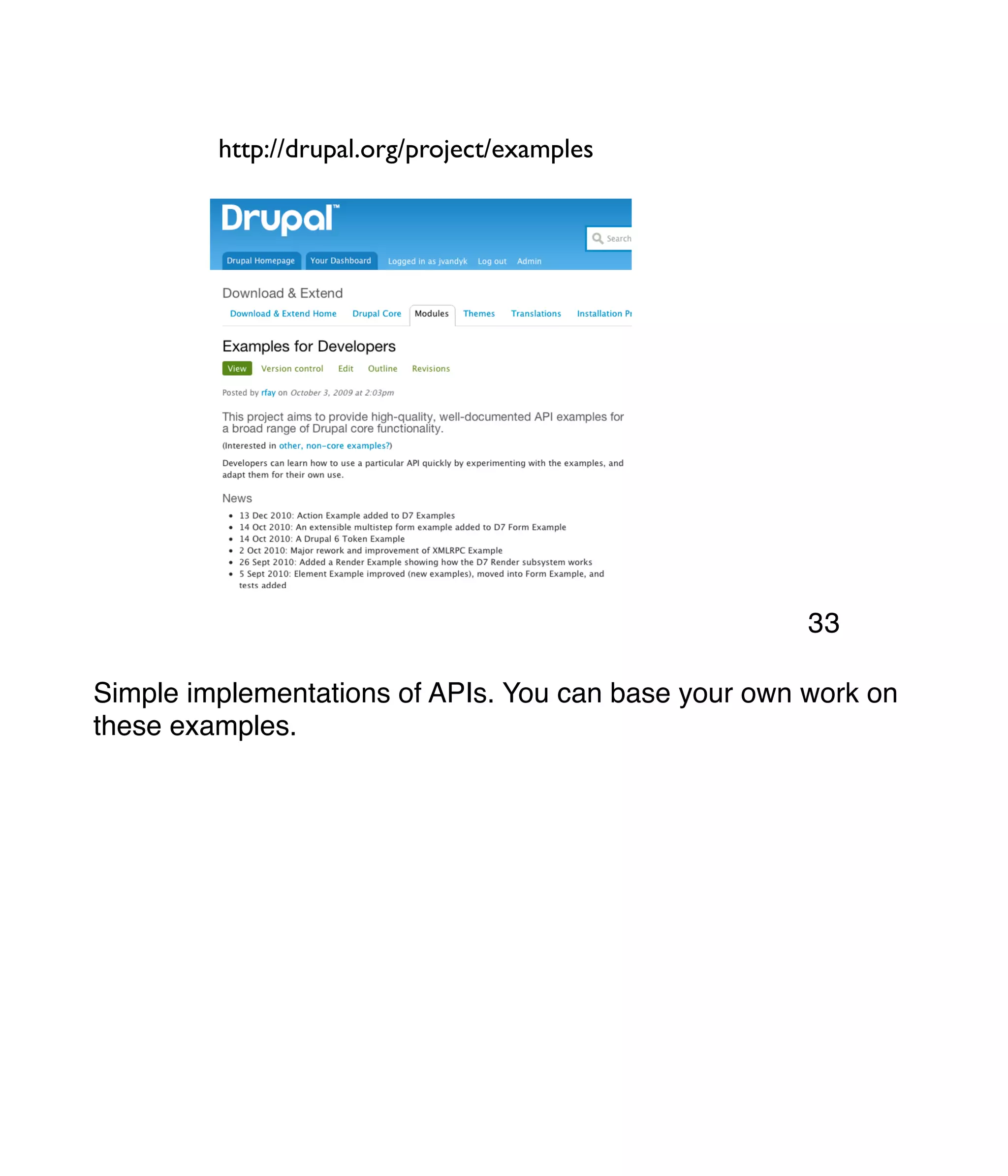

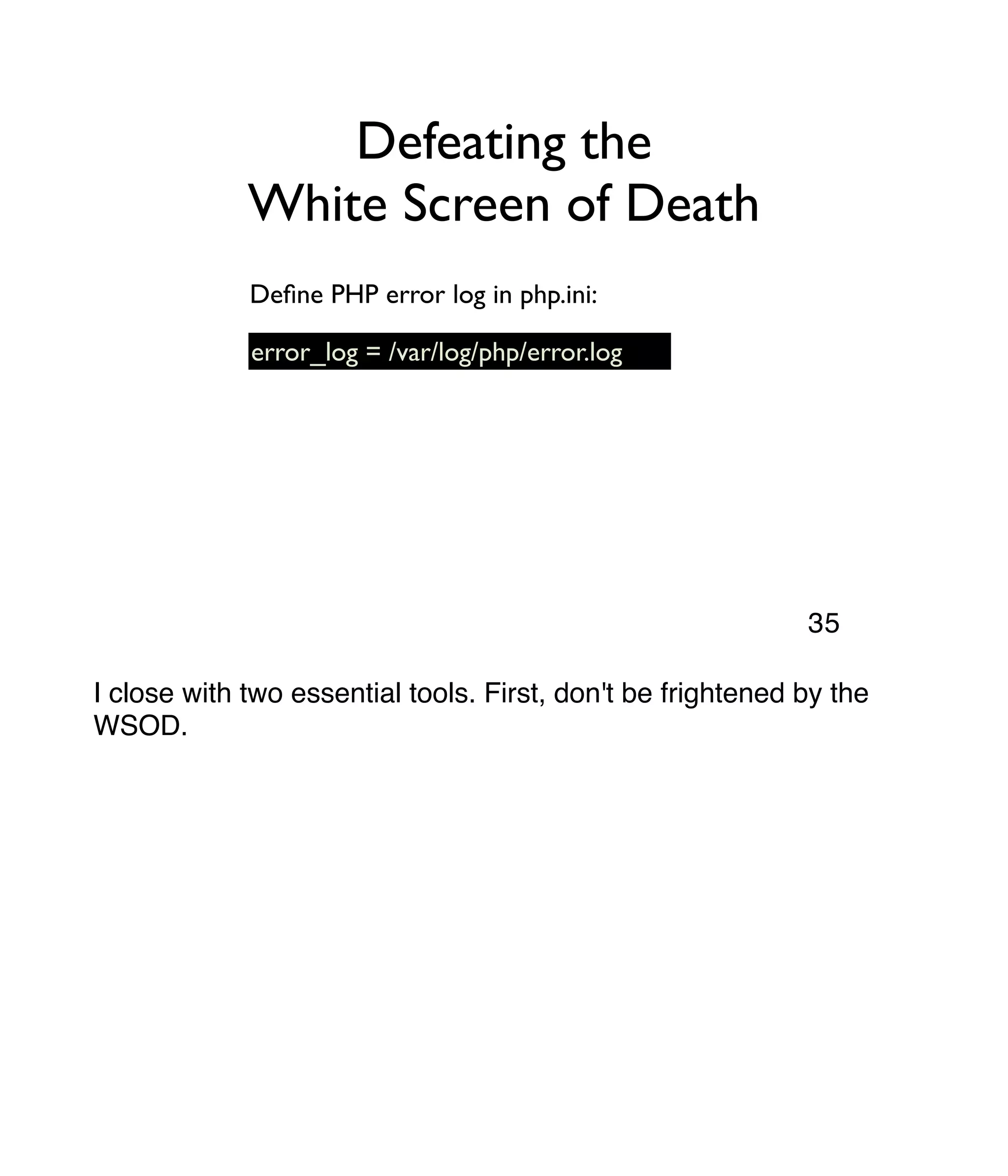
![tail -f /var/log/php/error.log [07-Sep-2011 16:25:02] PHP Fatal error: Call to undefined function int() in bgstat.module on line 41 Watch the error log to find out what’s going on: PHP will always tell you what went wrong in its log. If you've defined a PHP error log in php.ini, you can watch it in real time with tail -f. 36](https://image.slidesharecdn.com/introtodrupal7architecture-150719161606-lva1-app6891/75/Intro-to-drupal_7_architecture-36-2048.jpg)

![egrep -rn mail . | grep variable_set ./includes/install.core.inc:1802: variable_set('site_mail', $form_state['values'] ['site_mail']); ./includes/install.core.inc:1813: variable_set('update_notify_emails', array($form_state ['values']['account']['mail'])); ./modules/openid/openid.test:323: variable_set('user_email_verification',TRUE); ... There we go. The codebase is like a rich porridge, waiting for you to sift through and find the tasty lumps. 38](https://image.slidesharecdn.com/introtodrupal7architecture-150719161606-lva1-app6891/75/Intro-to-drupal_7_architecture-38-2048.jpg)
